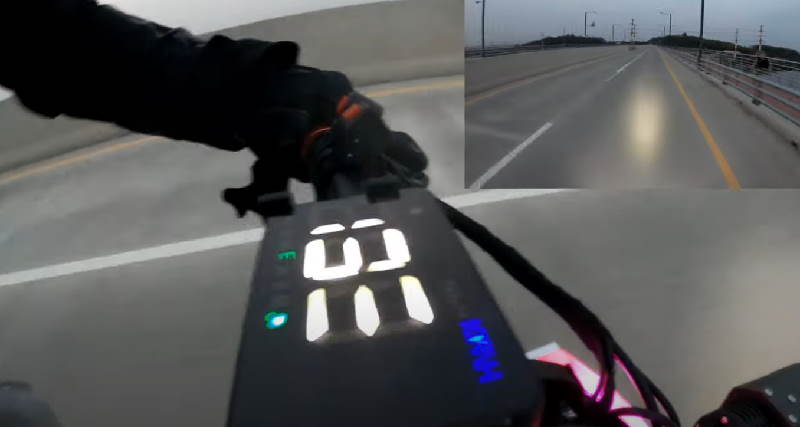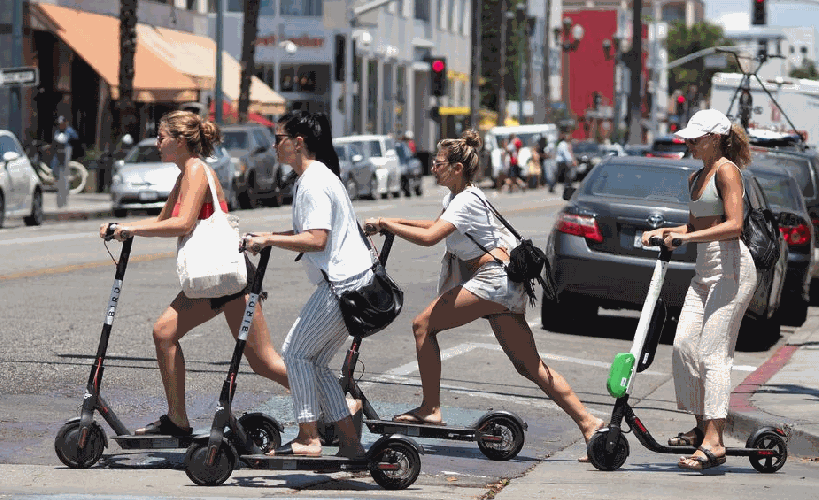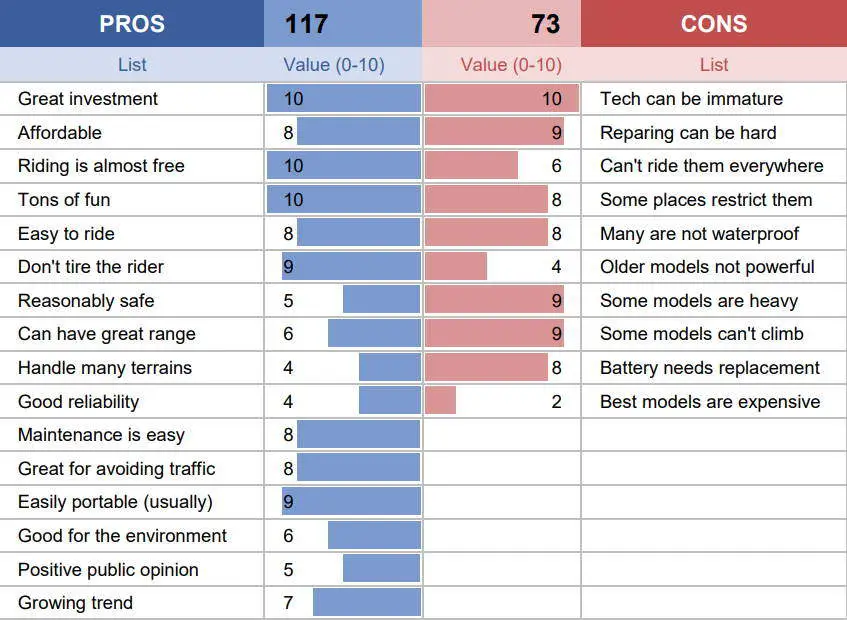“How to choose an electric scooter” is a common question by people looking to buy their first electric scooter.
There are all these different brands, models, features, prices, and numbers to think about. Then you need to take into account your needs, your budget, and your unique situation… it can be a daunting task.
Luckily, we’re here to help.

Electric scooter buying guide
To find your perfect electric scooter, follow these quick steps: Set your budget, ensure local law compliance, check weight limits and fit, consider the range and water resistance, prioritize climbing if in hilly areas, ensure portability, look for positive reviews from reputable brands and choose a design you like.
How to choose an electric scooter?
This method simplifies the process, typically narrowing your options to 1-3 models by eliminating scooters that don’t meet your specific needs. If you have multiple choices, trust your instincts, as they all meet your requirements.
We prioritize value in this system, beginning with price, addressing essential needs, and considering aesthetics last. There’s a valid reason for this approach, as you’ll soon discover.
To start, simply write down your needs with respect to 9 of the 11 points above:
- Your maximum budget for an electric scooter
- Legal requirements in your area (age, speed limits, road legality)
- Your weight or weight range
- Your height or expected adult height
- Required scooter range for your longest planned trip
- Local precipitation levels (low, medium, high)
- Terrain incline where you’ll ride most (low, medium, high)
- Portability needs (low, medium, high)
- Desired quality level (model ratings and brand reputation)
- should your scooter specialize in a certain area (like being a great student scooter, or being a great scooter for deliveries)
Then, you will use our electric scooter buyer helper tool and plug your specific needs into it.
While it narrows down your options, remember that it’s just software – not a substitute for your own judgment. Use it as a guide, not a rigid rule.
Afterward, evaluate the remaining choices and select the one you prefer. Aesthetics matter, but only after considering all other factors.
If you’re still undecided, consider some additional features, although they’re less crucial, they can help you make a choice.
They will be:
- top speed
- motor type
- brakes
- tire type
- suspension
- deck size
- ground clearance
- charge time
- charging cost
- off-road abilities
- app quality
- hacks and upgrades
- accessories available
Once you decide, you’ll have everything you want.
When buying for someone else, use the gift guide to find the best scooter gift ideas.
Now, let’s jump right into how to select each of the criteria according to your needs.
Your electric scooter should stay within your budget

If money isn’t a concern, feel free to skip this. Congratulations, you have access to the best electric scooters!
For the rest of us, we need to manage our budget. Let’s start with the most limiting factor for most people.
We might want the super-expensive scooters, but they’re often out of reach. While pricier scooters are usually better, great options exist in other price ranges.
Some of my favorite models fall in the mid to low price range, and I often recommend not buying the most expensive options. Hyper-expensive scooters are usually overkill and high speeds are rarely needed.
Start by setting your budget, preferably over $250. If you have $300, you can find reliable budget-friendly scooters that have proven themselves over the years.
For a first scooter, you can find a lot of great scooters for under $500. If you seek high quality without breaking the bank, consider scooters under $1,000, which includes many top choices.
With a limited budget, you can still find a great used scooter, but be diligent when buying. Check my guide on purchasing a used electric scooter for valuable insights from the EScooterNerds used scooter marketplace.
Consider buying an electric scooter as an investment – a smart one. If possible, increase your budget by a few hundred dollars for a longer-lasting and better experience.
How I chose my budget
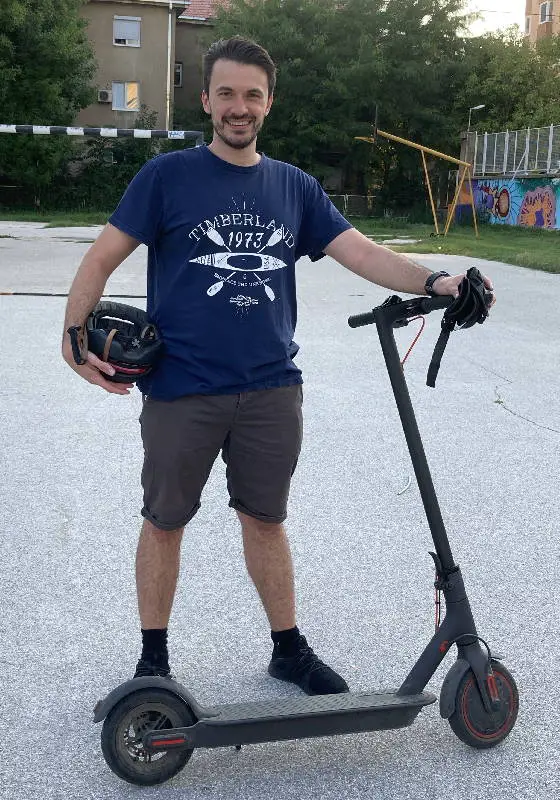
For example, when I was considering buying my first electric scooter, my initial budget was $450. I kind of had the options down to the Glion Dolly or the GoTrax XR Ultra.
But…
I really felt like I should get the Xiaomi M365 Pro. For just an extra $100, I would get a scooter that I actually liked, and other people obviously said only great things about it.
So I just decided to muster up an extra hundred by selling some old stuff I didn’t need from my home. It took me about 10 days more and about $120 extra. I finally got the Xiaomi M365 Pro.
I’ve never looked back.
Trust me, those extra few dollars can go a long way, especially in the lower-price categories. Even if it means waiting a few extra days to gather the money, or hustling up a few extra bucks.
Anyway, you will come up with a final budget in the end. This will be your starting point.
Your electric scooter complies with your local laws

The next thing to check is the local traffic laws and other laws that may affect your rides.
Street legality
For starters, check where can electric scooters be ridden in your area.
Some places allow them only on the roads, and some allow them on bike lanes but prohibit them from riding on sidewalks.
In many places, electric scooters have limited regulations. They usually follow bicycle or small motorcycle laws in such cases.
This means you will have few or no legal issues and always check your local laws and consult my electric scooter legal guide.
Speed limit
In regulated areas, electric scooters are often speed-limited, typically at 15 mph / 25 kmh. While it’s crucial to follow these laws, your responsibility lies in respecting them, not your scooter’s capabilities.
Having a scooter that exceeds your local speed limit is not required, but consider your practical needs. Some scooters match the legal limit. In some places, exceeding the limit, even technically, can be illegal.
Laws vary, and if they’re not strictly enforced, you can opt for a more powerful scooter. A recommended top speed is about 6-9 mph / 10-15 kmh above your local limit, ensuring versatility.
Age requirement
If you are not of legal driving age, check the legal age requirement for riding an electric scooter in your city or country.
In most cases, you will be able to ride if you’re at least 16. In many cases, there will be no age restrictions at all.
Your electric scooter supports your weight
Most electric scooters can support 220 lbs / 100 kg, and half can carry 265 lbs / 120 kg.
It’s important but not critical. For example, if you weigh 216 lbs / 98 kg, a 220 lbs / 100 kg capacity is sufficient.
However, it’s recommended to choose a scooter with a 10 kg buffer above your weight. As you approach the limit, scooter performance may drop significantly and if you’re under 176 lbs / 80 kg no concerns are needed.
If you are on the heavier side, you will have to get a scooter for heavy adults.
Fluctuating body weight
Some of us, including myself, experience fluctuating weight.
For example, my weight ranges from 185-200 lbs / 85-90 kg down to 159 lbs / 72 kg or up to 220 lbs / 100 kg.
With my Xiaomi scooter, I’ve noticed slight performance differences. If your weight fluctuates, choose a scooter with a weight capacity that covers your maximum potential weight to ensure optimal performance.
I made the mistake of not doing so with my Xiaomi M365 Pro (220 lbs / 100 kg capacity), but it’s manageable.
Maximize your scooter’s utility by considering your highest potential weight.
Your electric scooter supports your height
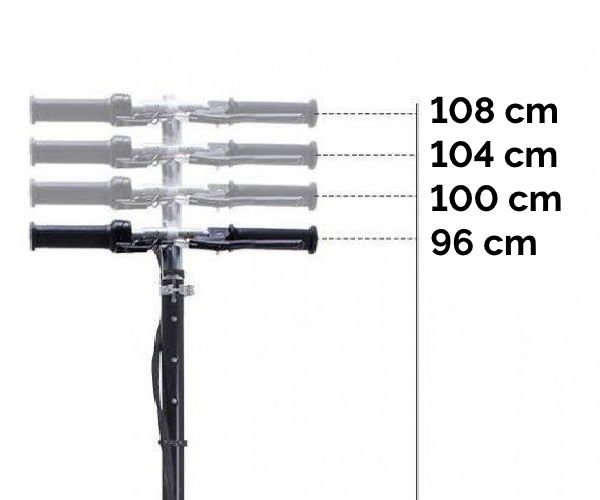
Around 70% of electric scooters have adjustable handlebars to suit various heights. In the remaining 30%, some allow you to select the stem length for a better fit.
Usually, this isn’t an issue, but it can be for very tall individuals (over 6’6” / 198 cm). If you’re tall, explore scooters designed for taller riders.
Even with adjustable height, some scooters may not be tall enough.
Account for your height or use our guide to determine the right scooter height.
Your electric scooter has enough range even for your longest-planned trips
For commuting, the scooter’s range is crucial.
Calculate your typical daily travel distance on Google Maps, and add 30% for inefficiencies and wear.
This approach provides your minimum range, which is wise to consider even for leisure, factoring in the longest potential ride.
If you want to never worry about range, check out my guide on the best long-range electric scooters.
Your electric scooter is water-resistant enough for your environment

Though not ideal, riding in the rain can be necessary.
In sunny regions like California or Greece, rainy days are rare, so leave your scooter at home on such occasions. If caught in the rain, find cover, knowing a few raindrops won’t damage your scooter.
For other countries, like the infamous UK, or Seattle your best bet will be to have as water-resistant a scooter as possible or make your scooter more waterproof.
Check the scooter’s IP rating, a two-digit value like “IP54” or “IP67, with the second digit indicating water protection.
For moderate rain, opt for a second digit of at least 4. In heavy rain, 4 is better than nothing, but 5 offers safer protection.
Note that many scooters have a second digit of 4 in their IP rating.
In fact, more than half the scooters today have no IP rating specified at all. That can mean one of the following three:
- their scooters are water-resistant but haven’t been IP certified (unlikely)
- their scooters have very poor water protection
- their scooters have no water protection at all
The lower number of water-resistant scooters, coupled with the fact that you shouldn’t even be riding your scooter in wet weather, make picking a model for rain-heavy places tricky.
Your electric scooter can climb hills well enough for your area
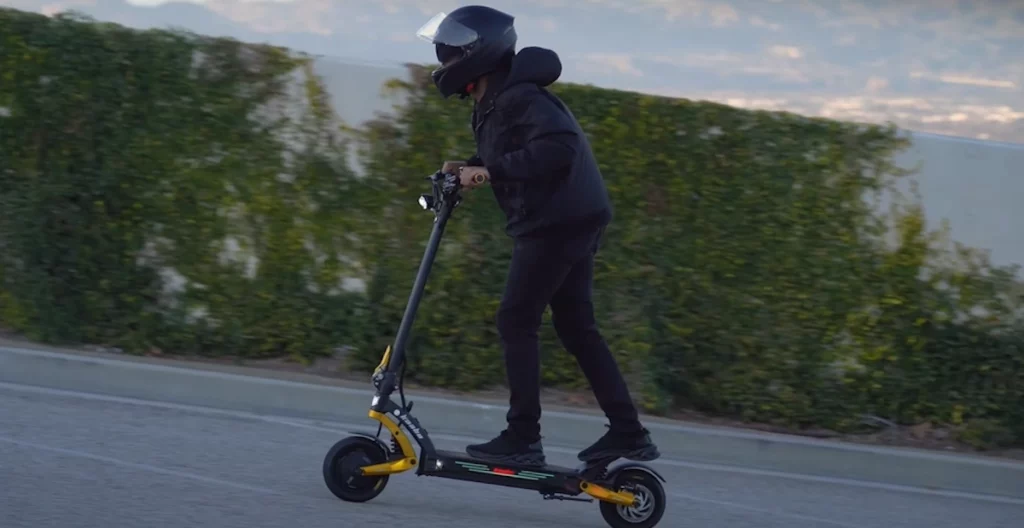
The hill-climbing abilities of your scooter will only matter if you live in a place with lots of hills and valleys, or maybe if you have one or two steep inclines on your regular rides.
The actual number of hills and valleys is not as important as their steepness and you need to consider both.
The choice of a scooter for you in the tool will look like this:
- No hills, no need to consider climbing angle.
- Few or mild hills aim for 10°.
- Some or fairly steep hills, go for 20°.
- Very hilly or very steep hills, choose 30° or more for climbing ability.
If you live in an area with lots of inclines, I recommend checking out my guide on the best hill-climbing electric scooters.
Your electric scooter is portable enough for your needs
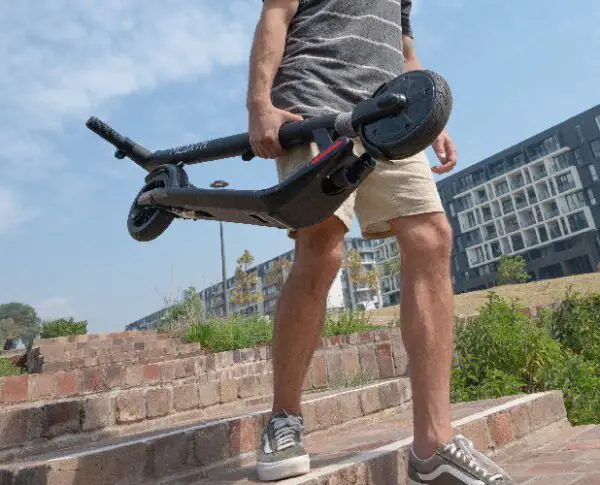
Portability can be a dealbreaker, often the most crucial scooter feature. Assess your needs by considering two factors:
- how much weight are you comfortable carrying for short distances
- how often do you have to carry your scooter in your hands, take it with you in a car trunk, a bus, a train, through doors and elevators, and climb stairs with it
For example, if you weigh 68 kg and need to carry it up three flights of stairs during your commute, a 70 lbs / 32 kg scooter is impractical.
But if you weigh 82 kg, have a shorter commute, and only deal with one elevator door, a 46 lbs / 21 kg scooter is feasible.
For racing scooters, portability isn’t a concern.
Use our scooter comparison tool to set your maximum carry weight. Test it if unsure to avoid heavy scooters you can’t handle and potentially higher costs.
Consider tight spaces where you’ll maneuver the scooter. Use these factors to determine your required level of portability:
- not that much portability needed
- portability needed
- portability is critical
Then pick scooters based on both their weight and portability index.
The portability index is my personal measure for scooter portability. It considers weight and volume to rate each model. For details, visit the portable scooters.
Based on your needs, the following choices will be made:
- when you don’t need portability, weight and portability index will be ignored
- when you need portability, scooters with a portability index less than 20 should be excluded
- when portability is very important to you, scooters with a portability index less than 75 should be excluded
Your electric scooter has good reviews and ratings online
This is a critical aspect to weigh when selecting an electric scooter.
Most models have user reviews, ratings, complaints, and recommendations.
- if the scooter has less than 25 reviews, either avoid or wait
- if more than 300 reviews, the rating should be at least 3.6/5
- if between 200 and 299 reviews, the rating should be at least 3.8/5
- if between 100 and 199 reviews, the rating should be at least 4.0/5
- if between 50 and 90 reviews, the rating should be at least 4.2/5
- if between 25 and 49 reviews, the rating must be at least 4.5/5, and there must not be more than 25% one or two star reviews combined
This system provides a useful overview of online products.
It considers that highly popular products may not always sustain high ratings over time, but that doesn’t mean they are bad products.
While useful, this simple system is just an approximation. Nothing will be better than:
- digging deep into user comments
- talking to people that have tried, or even better, owned the scooter, either in person or online
Check my research on electric scooter issues for insights into common complaints among popular models and which ones to avoid.
Your electric scooter comes from a trusted brand and manufacturer
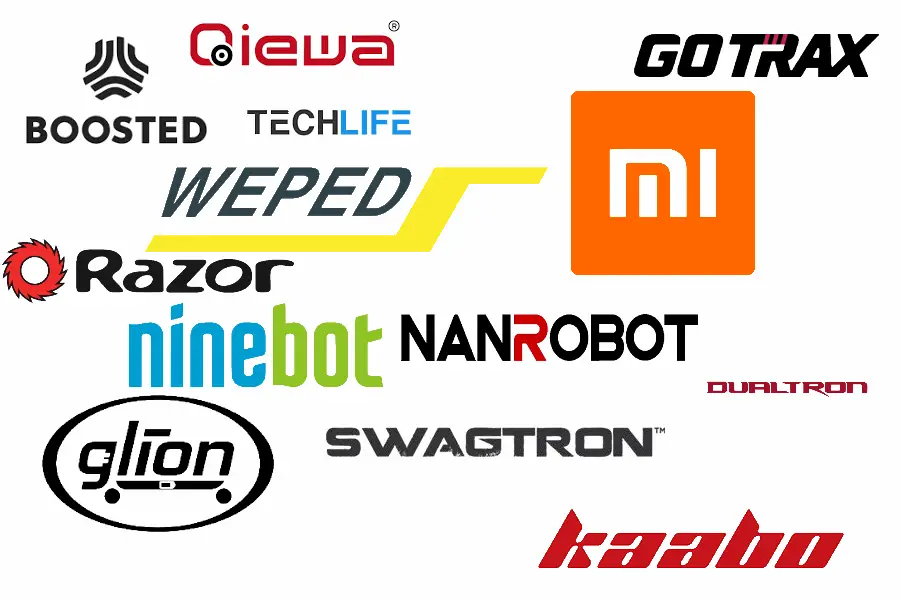
The brand and manufacturer’s reputation, while not as crucial as the model, should be considered. While you might find a good deal with a generic or no-name brand, it’s a risk.
For most, this decision is significant, so invest time researching the brand. Here are some respected electric scooter brands to start with:
- EcoReco
- EMove
- E-TWOW
- Evo
- EVOLV
- Fluid Free Ride
- Ford
- Glion
- GoTrax
- HiBoy
- Hollyburn
- Imax
- Inokim
- Joyor
- Kaabo
- Kugoo
- Lehe
- Levy
- Macwheel
- Megawheels
- Mercane
- Micro
- Minimotors USA (Dualtron, Speedway)
- NanRobot
- Ninebot/Segway
- Qiewa
- Razor
- Rion
- RND
- Scrooser
- SoFlow
- Stator
- Swagtron
- Tarsa
- Techlife
- Turbowheel
- Uberscoot
- Unagi
- UScooters
- Voyager
- WePed
- Xiaomi
- Zero
Check out our comprehensive guide to electric scooter brands and manufacturers to learn more.
The scooter’s brand and its warranty are crucial factors.
I suggest choosing brands that offer at least one year of warranty on critical components, a minimum of six months on the battery, and a return period of 15 days, ideally 30.
For details, check my guide on electric scooter warranties and return policies to avoid common pitfalls.
You like the way your electric scooter looks
Design is subjective, so it’s your personal choice. Aesthetics shouldn’t overshadow your primary needs, as even an unattractive scooter can fulfill practical purposes.
Once you’ve shortlisted your options, select the one that appeals to your eye. This choice is simpler once your essential needs are met.
For reference, my preferred models have a tech-inspired appearance, with sleek black hues and vibrant red or turquoise accents, avoiding white as it can get dirty easily.
Other factors to consider
By now, you should have your ideal choices or know what to consider when picking an electric scooter.
If you’re still undecided, consider other factors, which are less critical but may assist you in narrowing down your options.
Top speed
While top speed is one of the most alluring, most noticeable features of an electric scooter, it shouldn’t be a priority.
Legal speed limits
Legal restrictions often limit speeds to about 15 mph / 25 kmh or 18 mph / 30 kmh in most places.
Secondly, speeds over 31 mph / 50 kmh are already quite dangerous. Stick to scooters in the 18-31 mph / 30-50 kmh range unless you’re into racing.
If you want a faster scooter, see my guide on the fastest electric scooters in existence.
Motor type
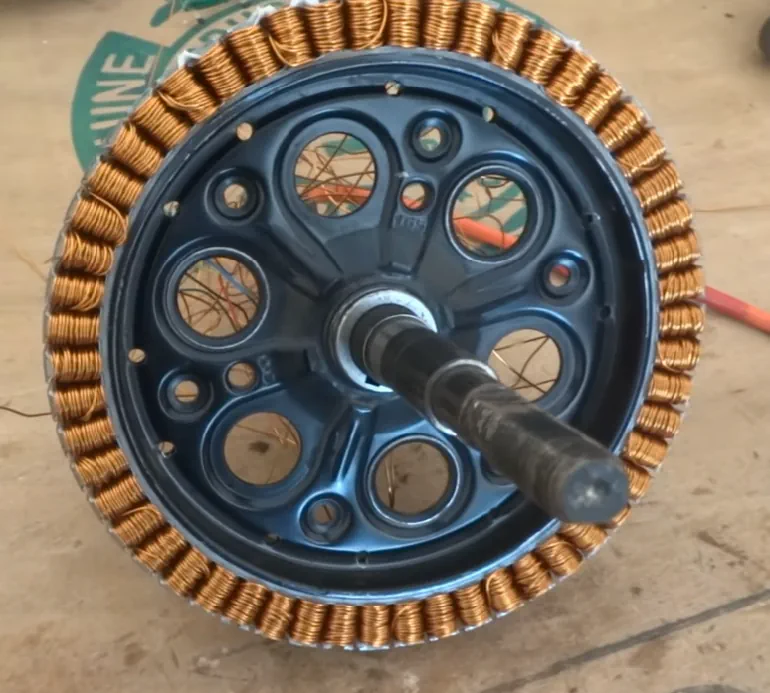
This option can be a deciding factor if you’re stuck.
When choosing between a geared or hub motor for an electric scooter, prefer the hub motor. Geared motors are outdated and rarely found in recent models.
Electric scooter motors come in two types: brushed DC and brushless DC. Opt for the brushless motor for its modern and efficient technology.
Note that scooters can have one or two motors. Dual motor scooters generally offer superior performance but come at a higher cost.
To learn about electric scooters and the contrast between brushed and brushless motors, visit the guide on electric scooter motors, or the more general guide on how scooters work.
Brakes
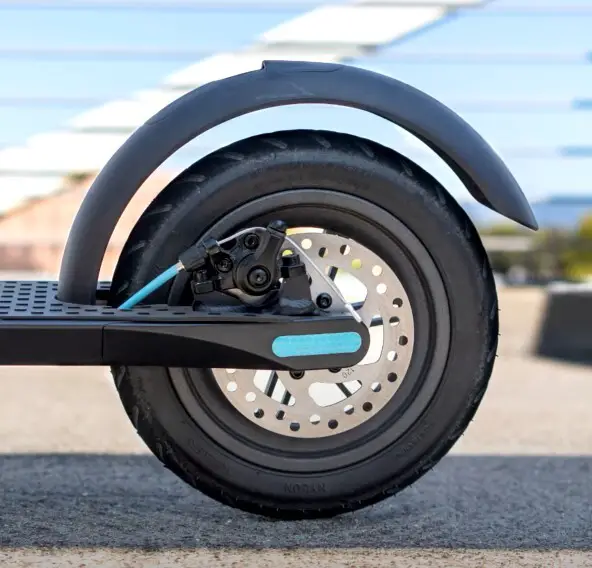
Brakes in scooters are very important, but it’s hard to measure and compare them effectively.
Until we come up with a way to quantify the quality of brakes, simply look at the number of brakes that the scooter has.
There are three common types of brakes:
- mechanical disk brakes, activated by a lever (usually the best option, especially hydraulic ones)
- electronic brakes, activated by a button
- rear fender brakes, activated by your foot
Since brakes can malfunction, it’s best to have as many failsafe options in place as possible.
Tire type
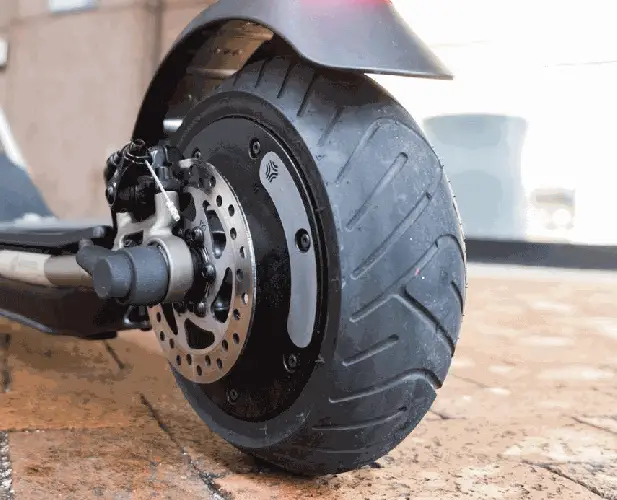
I can easily see the type and size of tires as calling the final shot. In fact, tire type can require a lot of thought in some cases, and can be one of the most important factors.
The main dimension across which you choose tire type will be solid vs pneumatic.
Simply put:
- choose solid tires if you live somewhere with poor roads with lots of bumps and potholes, lots of broken glass, garbage, or sharp debris
- otherwise, choose pneumatic tires
Solid tires have limited practical applications, leading to drawbacks such as reduced comfort and stability. They are typically not the ideal choice unless absolutely necessary.
Regarding tire selection, opt for smooth tires for improved performance, including speed and range. Select patterned or off-road tires when you require off-road or enhanced climbing abilities.
The final dimension of tires is their size. The most common tire diameters today will be:
- 6 inches
- 7.5 inches
- 8 inches
- 8.5 inches
- 10 inches
- 11 inches
Scooter tire size matters for performance and comfort. Bigger diameter tires offer a smoother ride but consume more power, while wider tires provide control but increase friction and wear out faster.
Scooters come with tires suited to their purpose: off-road scooters have large, patterned off-road tires, and commuting scooters feature standard 8.5-inch tires.
While tire choice is important, it’s just one factor to consider when selecting a scooter. Other factors like battery life, motor type, and intended use are often more crucial.
Suspension
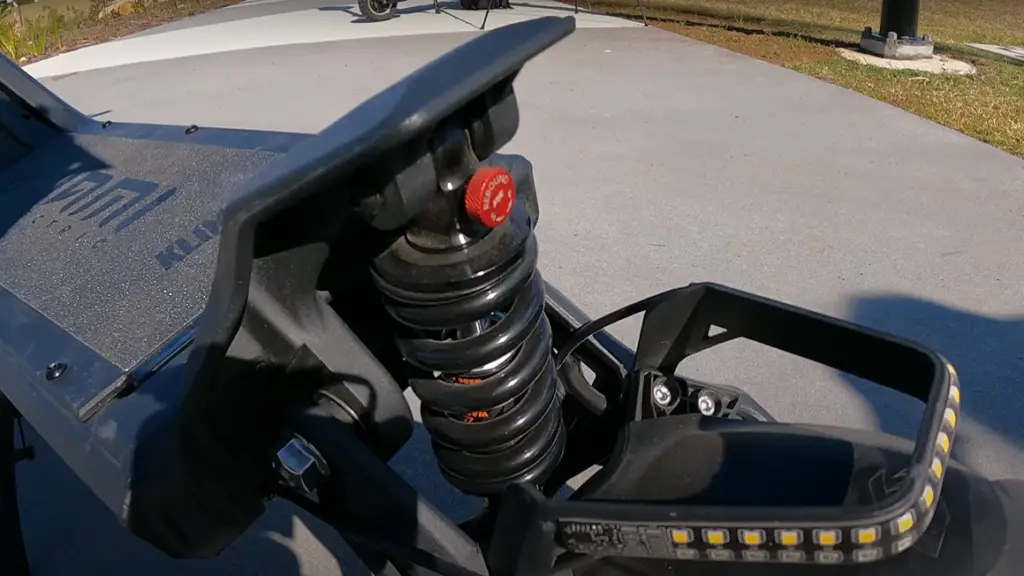
All things being equal, scooters with suspension are better than ones without it. The suspension will make a big difference in the comfort of the ride.
Suspension usually comes in somewhat specialized scooters or ones that have some other design decision requiring them.
These will typically include off-road models, or scooters with solid tires.
So, your decision may already be made for you, or if not, all of your final choices will have suspension.
Deck size
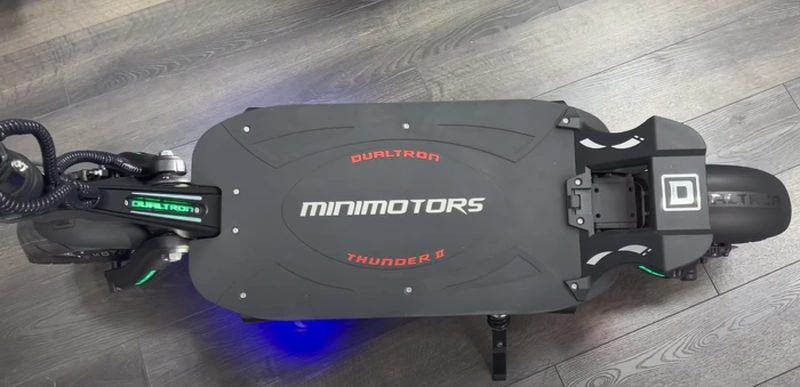
While not critical, deck size can easily be your kingmaker.
Pretty much all electric scooters for adults will be big enough for the feet of most people.
However, bigger decks are usually better. Why not have more room for your feet?
If it comes down to this, you can choose the model with the bigger deck.
Ground clearance
Ground clearance is the space between the ground and the deck’s lowest point. While this data may not always be provided, you can estimate it accurately by comparing the tire size to the deck visually.
Select lower ground clearance for stability and a lower center of gravity when you have fewer sidewalks to cross. Opt for higher ground clearance when dealing with numerous sidewalks or rough terrain.
Your choice depends on your specific needs and riding conditions.
Charge time

The best practice is to charge your scooter at day’s end for a full charge the next day.
Plugging it in at the office for your trip back home is also a good habit. Many scooters support fast or dual chargers, which reduces charging time, making it less crucial.
But still, shorter charging times will always beat longer ones.
Charging times may not be a big concern, with range being more important. If you need to charge your scooter multiple times a day, prioritize the shortest charging time.
Charging cost
Charging cost depends on your scooter and electricity prices.
Even with the largest batteries and high electricity costs, a full charge costs just a few cents.
However, over time, these costs can add up. If everything else is equal, go for the scooter with lower charging costs. This is rarely the case, as different charging times are linked to battery sizes and ranges.
Consider charging cost only if all other factors are identical and charging costs vary.
Off-road
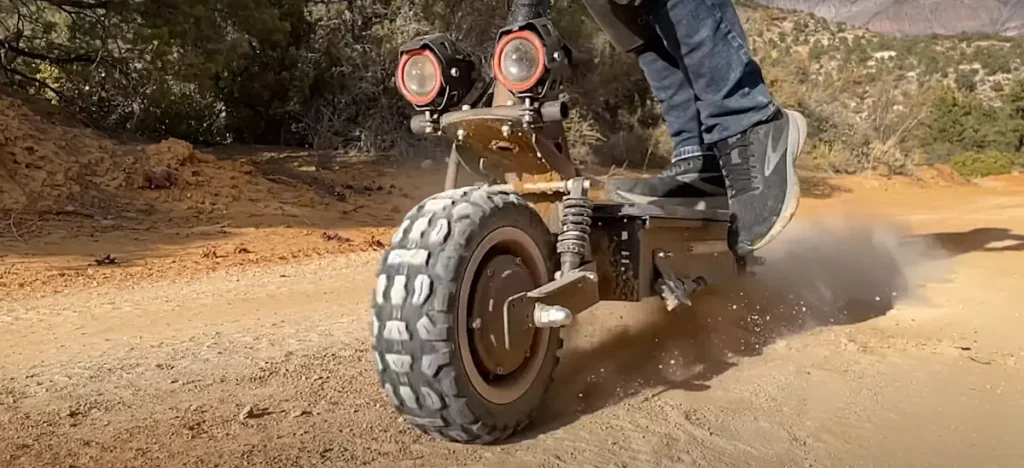
If you are thinking about getting an off-road scooter, this is probably not your first rodeo.
And if it is, I would advise against getting an off-road scooter. Off-road scooters are usually not good beginner scooters.
First, off-road scooters often have more power than you’ll need.
Second, they tend to be pricier. If you’re new to scooters, consider not making a big upfront investment.
However, if you’re certain about wanting an off-road scooter, your options will be limited, making your decision easier. Filtering for off-road capabilities can help you choose from the available options.
App quality
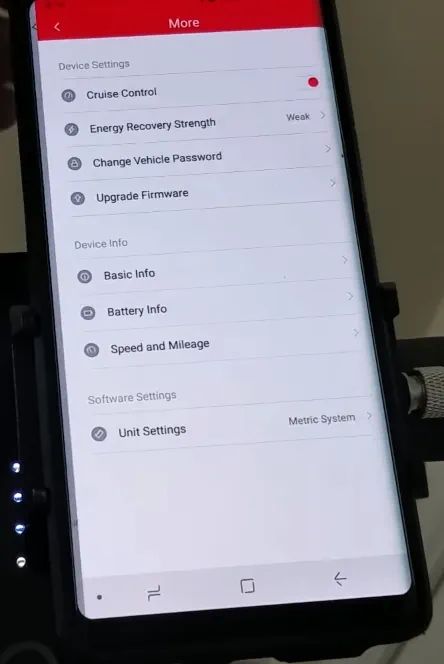
Most scooters will have apps for them.
If you have to choose between a model with an app and a model without one, the choice is clear – choose the one with the app.
If both have apps, look at their app store ratings. It will rarely come down to this, but if it does, go for the one with better app store ratings.
Hacks and upgrades
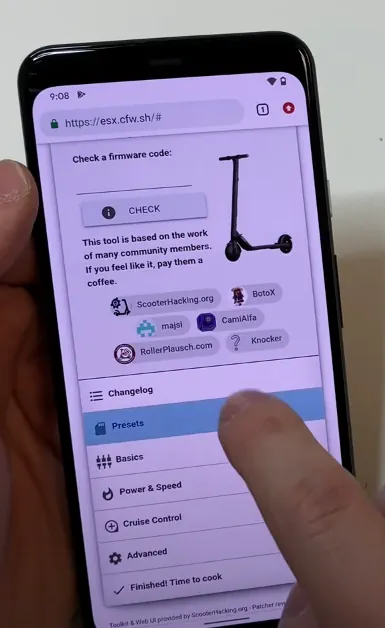
Hacking the firmware is rarely discussed, mostly because it’s only available for the most popular scooters.
Firmware hacking is seldom mentioned, mainly for popular scooters.
Avoid hacking your firmware, as it’s unnecessary and could void your scooter’s warranty. If the option is available, consider adding it for cool features like removing speed limits.
Accessories and customizations available
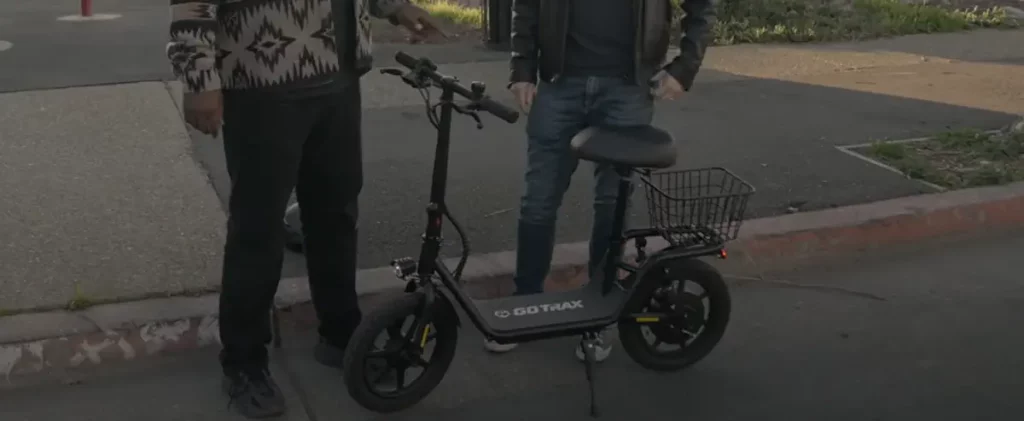
Scooter equipment, like locks, helmets, fluorescent vests, and kneepads, will be independent of the scooter.
Many possibly important accessories are made specifically for a single scooter model. While there are a lot of generic scooter accessories, buying one always comes with the risk of it not fitting your scooter.
The most useful examples of this would be a seat and a trunk or basket.
If your options lack these features, choose a scooter that supports them. Having the option can be useful even if you don’t currently need them, in case your preferences change.
Climate and weather
Climate should have a minor impact on your buying decision, but it’s still worth considering if it suits your location.
If you live in a hot, sunny area, opt for scooters that perform well in the hot weather and in the summer and If you’re in a cold, snowy region, choose a good winter scooter if available.
The ideal motor wattage for an electric scooter depends on your needs. 250W to 500W is suitable for daily use, while 500W to 1000W is better for hills and acceleration.
Your budget for an electric scooter varies. Entry-level: $250-$500, Mid-range: $500-$1,000, Premium: $1,000+. Choose based on your budget and usage.
Brushless hub motors are better for electric scooters due to efficiency, low maintenance, and quiet operation, compared to geared motors.
A 1000W electric scooter can reach 25-35 mph based on factors like rider weight, terrain, and design.
Bigger wheels provide a smoother ride, better obstacle clearance, and stability. Wheel size choice depends on terrain and usage.
Popular value-for-money electric scooters include Xiaomi M365, Ninebot Max G30, and Segway Ninebot ES2, offering a balance of price and performance.


